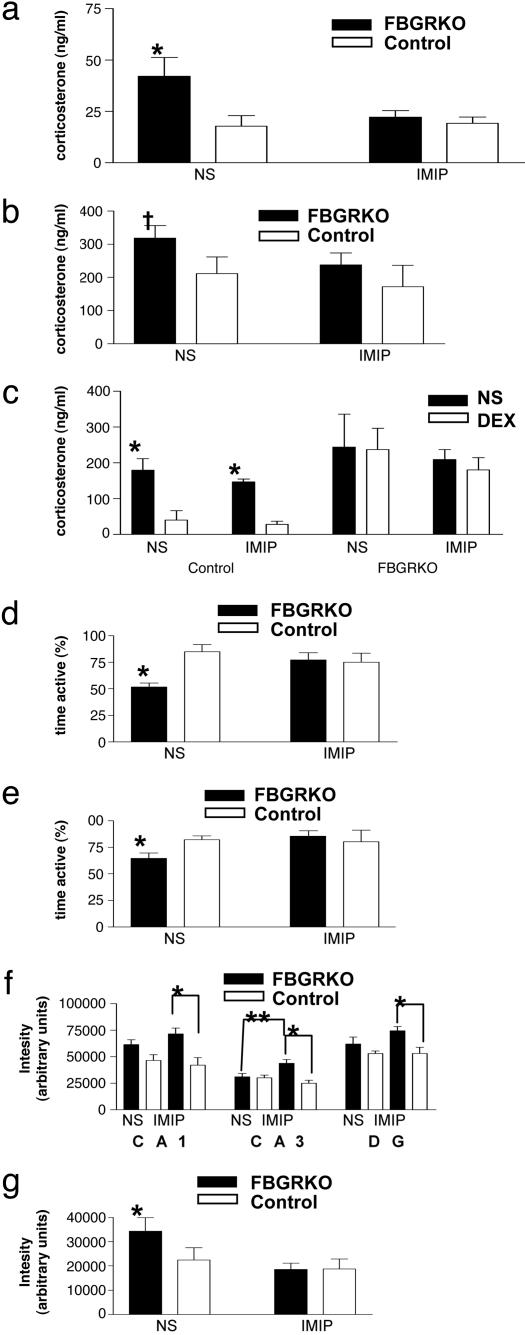Fig. 5.
Chronic treatment with imipramine reverses HPA axis hyperactivity and the behavioral despair phenotype of FBGRKO mice. (a and b) FBGRKO mice treated with vehicle show an increase in basal circadian corticosterone release (P < 0.05, n = 4–6) (a) and a trend toward increased peak corticosterone release (†, P = 0.08, n = 4–6) (b). After chronic treatment with imipramine, FBGRKO mice show no significant differences in basal or peak corticosterone release from control mice treated with either imipramine or normal saline (NS). (c) In the DST, imipramine does not reverse the impairment in negative feedback suppression of the HPA axis in the FBGRKO mice. (d and e) FBGRKO mice treated with NS showed decreased activity in both the tail suspension (P < 0.0001, n = 4–6) (d) and forced swim tests (P < 0.001, n = 4–6) (e) compared with controls. However, FBGRKO mice treated with imipramine showed no significant difference compared with controls (n = 3–6). (f) NS administration tended to increase MR mRNA expression in areas CA1 and DG of the FBGRKO, and imipramine treatment further augmented the differences between genotypes (*,P < 0.004, n = 4–6). In region CA3, increased MR mRNA was specific for imipramine treatment in FBGRKO mice (**, P = 0.02). (g) FBGRKO mice treated with NS express significantly more CRH mRNA than vehicle-treated controls (P = 0.015, n = 4–6); imipramine treatment decreased PVN CRH mRNA to control levels.

